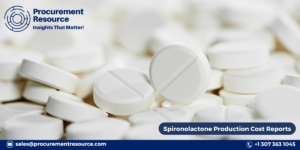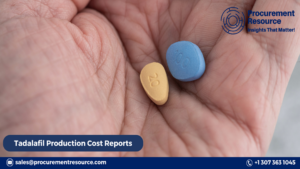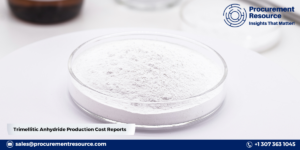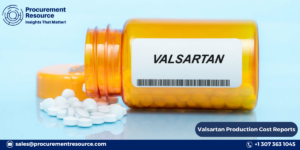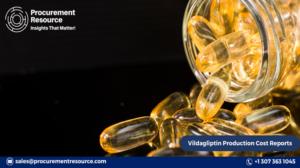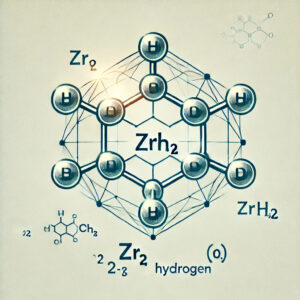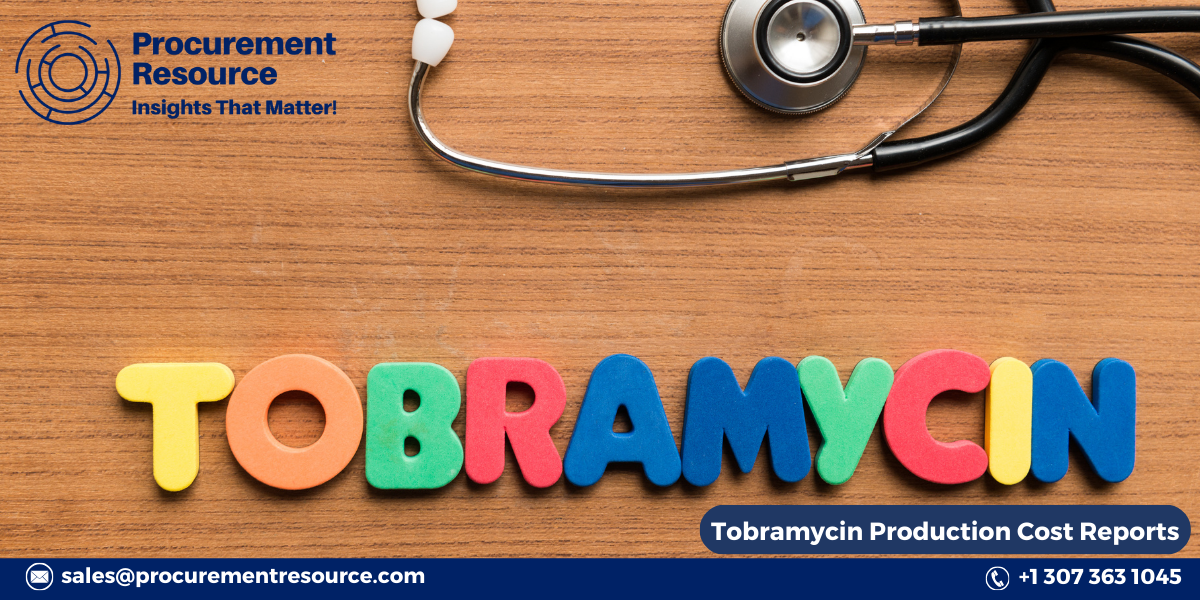
Tobramycin is an aminoglycoside antibiotic widely used to treat bacterial infections, particularly those caused by gram-negative bacteria. Its effectiveness makes it a critical component in treating infections in various areas, including the respiratory system, eyes, and ears. This blog delves into the Tobramycin production process, its molecular structure, its specific use for ear infections, and the composition of the medication.
Tobramycin Production Process
The production of Tobramycin involves a highly controlled process that ensures the antibiotic is both safe and effective for medical use. The process typically involves fermentation, extraction, purification, and formulation. Here’s a step-by-step breakdown of the Tobramycin production process:
Request For Sample: https://www.procurementresource.com/production-cost-report-store/tobramycin/request-sample
- Fermentation: Tobramycin is derived from a naturally occurring strain of Streptomyces tenebrarius. This bacterium is cultured under optimal conditions in large fermentation tanks. During this stage, the bacteria produce Tobramycin as a secondary metabolite. Specific growth media and conditions, such as temperature, pH, and oxygen levels, are carefully monitored to maximize yield.
- Extraction: Once the fermentation process is complete, Tobramycin is extracted from the fermentation broth. This step typically involves using solvents or other chemical agents to separate Tobramycin from the bacterial culture and other by-products.
- Purification: After extraction, Tobramycin undergoes several purification steps to remove impurities and unwanted substances. Techniques like ion-exchange chromatography, filtration, and precipitation are used to achieve a high level of purity. The purified Tobramycin must meet strict pharmaceutical standards for safety and efficacy.
- Formulation: The final step in the production process involves formulating Tobramycin into various forms, such as injectable solutions, eye or ear drops, or nebulizer solutions for inhalation. Formulation also includes adding stabilizers, preservatives, and other excipients to ensure the medication remains stable during storage and administration.
Each step in this production process is conducted under stringent regulatory guidelines to ensure the quality and consistency of Tobramycin used in clinical settings.
Tobramycin Structure
Tobramycin belongs to the aminoglycoside class of antibiotics, which share a similar chemical structure. It consists of a three-ring structure: an aminocyclitol ring and two sugar rings. Its molecular formula is C18H37N5O9, and it has a molecular weight of approximately 467.52 g/mol.
The unique structure of Tobramycin allows it to bind to the bacterial ribosome’s 30S subunit, inhibiting protein synthesis. This inhibition leads to bacterial cell death, making Tobramycin highly effective in combating infections. Its broad-spectrum activity, particularly against gram-negative bacteria such as Pseudomonas aeruginosa, makes it a valuable antibiotic in the medical field.
Tobramycin for Ears
Tobramycin is commonly used in the treatment of ear infections, specifically otitis externa (commonly known as swimmer’s ear) and chronic suppurative otitis media. The antibiotic is often formulated as ear drops to directly target the infected area. Tobramycin works by penetrating the bacterial cell wall, disrupting protein synthesis, and ultimately killing the bacteria causing the infection.
In treating ear infections, Tobramycin is often preferred due to its effectiveness against common pathogens, including Pseudomonas aeruginosa and Staphylococcus aureus. It is available as a standalone solution or in combination with other agents, such as corticosteroids, to reduce inflammation and swelling while simultaneously combating infection.
Tobramycin Composition
Tobramycin medications come in various formulations depending on the intended use (e.g., injection, ear drops, eye drops, inhalation solution). The composition typically includes:
- Active Ingredient: Tobramycin, in varying concentrations depending on the formulation. For ear drops, the concentration is typically 0.3% Tobramycin.
- Inactives/Excipients: These include stabilizers, preservatives, and buffering agents. In the case of Tobramycin ear drops, ingredients like benzalkonium chloride (as a preservative), sodium chloride, and water for injection are commonly used.
- pH Adjusters: Substances like sulfuric acid or sodium hydroxide may be used to maintain the appropriate pH level of the solution for safety and effectiveness.
These formulations are meticulously developed to ensure that Tobramycin remains stable and effective over its shelf life, providing targeted treatment to the site of infection while minimizing potential side effects.
Tobramycin is a powerful antibiotic with wide-ranging applications, from treating ear infections to combating severe respiratory conditions. Its production process, involving fermentation, extraction, purification, and formulation, ensures that the medication meets rigorous quality standards. The unique structure of Tobramycin allows it to disrupt bacterial protein synthesis, and its composition in ear treatments provides a potent solution for managing infections.
Contact Us:
Company Name: Procurement Resource
Contact Person: Endru Smith
Email: sales@procurementresource.com
Toll-Free Number: USA & Canada - Phone no: +1 307 363 1045 | UK - Phone no: +44 7537 132103 | Asia-Pacific (APAC) - Phone no: +91 1203185500
Address: 30 North Gould Street, Sheridan, WY 82801, USA
